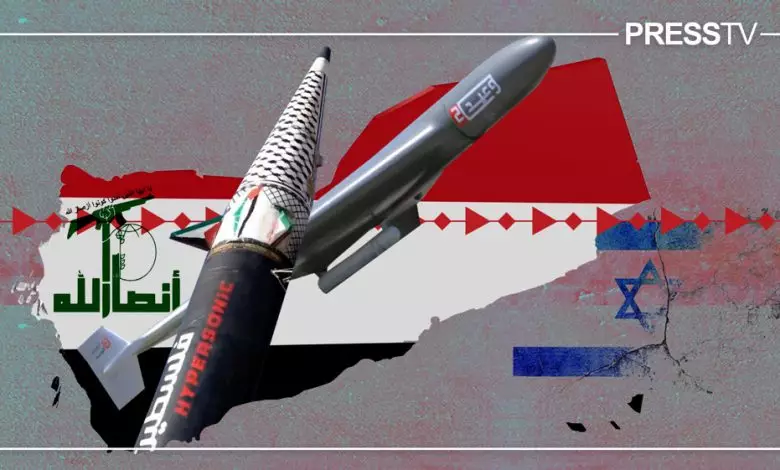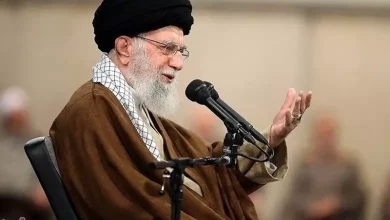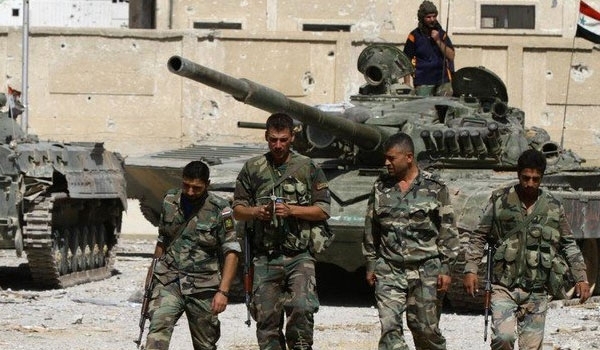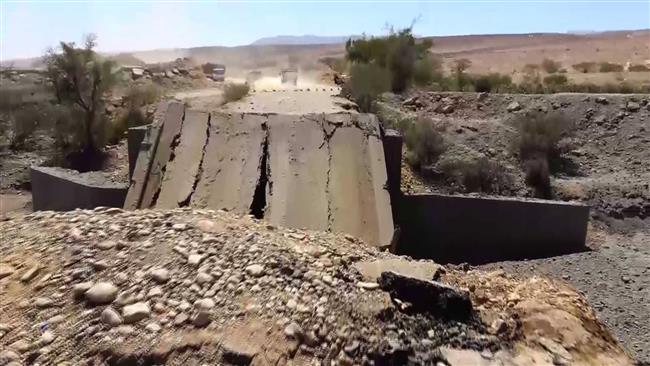Sleepless in Tel Aviv: Yemen’s long-range missiles unsettle residents, impact occupied territory
According to a report published in The New York Times on Sunday, Israel is facing challenges in addressing significant human and material losses resulting from Yemeni missile strikes. These attacks have reportedly caused considerable anxiety among settlers residing in the occupied territories.

In the last 10 days, a minimum of 13 operations have been directed at Israeli military facilities in a demonstration of support for Palestinians in Gaza, as tensions continue to escalate within the embattled region amidst the ongoing conflict described by some as genocidal.
Brigadier General Yahya Saree, the spokesperson for the Yemeni military, stated on Sunday that a significant portion of the strikes were focused on the central areas of the occupied Palestinian territories.
In the wake of a decade marked by conflict and blockades, Yemen has successfully amassed an impressive range of long-range weaponry, enabling it to conduct precise strikes against adversarial targets.
In recent weeks, the Yemeni military has intensified its operations against the Israeli regime and its Western allies, prominently demonstrating their capabilities with the use of hypersonic ballistic missiles, according to statements from Yemeni military officials.
Since October of the previous year, Yemen has emerged as a leading advocate of pro-Palestinian initiatives, consistently engaging in actions against vessels associated with Israel in regional maritime zones, as well as targeting military sites within the occupied Palestinian territories.
The Arab country located at the southern extremity of the Arabian Peninsula has demonstrated a notable enhancement in its military capabilities by deploying an advanced range of missiles and drones, all produced domestically, in recent operations.
Yemen’s military prowess has consistently captured international attention, with its latest deployment of hypersonic missiles to target Israeli military positions in the occupied territories further showcasing its advanced capabilities.
**Advancements in Yemeni Ballistic Missile Capabilities**
Western media frequently highlight Iranian support in Yemen for political purposes. However, it’s important to note that Yemen has faced significant isolation by land and sea due to the Saudi-led coalition and Western-backed war efforts since 2014. This isolation has rendered the transportation of large-scale military equipment, such as missiles and launchers, nearly impossible.
The advancement of ballistic technology has been achieved through a strategic dependence on domestic resources, the diversification of a missile arsenal previously reliant on foreign weaponry, and the pressing necessity to establish a retaliatory capability in response to airstrikes from the Saudi-led military coalition.
Prior to the onset of the conflict, Yemen did not have Iranian missile systems in its arsenal. Instead, the country was equipped with Soviet-era short-range ballistic missiles (SRBMs) and surface-to-air missiles (SAMs), alongside SRBMs acquired from North Korea.
The Scud and OTR-21 Tochka tactical ballistic missiles, along with the V-750/755 missiles for the S-75 Dvina/Volga surface-to-air missile systems, which were procured in the late 1970s and 1980s, experienced limited deployment during the civil conflicts that occurred between the North and the South in the previous century.
In the early 2000s, Yemen expanded its arsenal by obtaining advanced Scud missiles from North Korea. This acquisition gained international attention following a widely reported incident in December 2002, when the US Navy intercepted a shipment of 15 Scuds but subsequently allowed it to proceed.
In May 2015, Yemen inaugurated a new missile force, further instituting a Missile Research and Development Center (MRDC) to advance its missile research capabilities.
In an early endeavor, engineers at MRDC undertook the transformation of V-750/755 surface-to-air missiles, which had become outdated in countering contemporary jet aircraft, adapting them into surface-to-surface missiles now known as the Qaher-1.
Yemen appears to have drawn inspiration from the historical approaches of China and Iran in transforming similar surface-to-air missiles (SAMs) into efficient surface-to-surface missiles (SSMs), known as the CSS-8 and Tondar-69, respectively.
The Qaher-1 missile, which entered service in late 2015, boasts a range of 250 kilometers and is equipped with a 200-kilogram warhead, paralleling the capabilities of both the CSS-8 and the Tondar-69.
In March 2017, authorities unveiled the Qaher-2, an advanced iteration boasting a range of 400 kilometers and capable of carrying a payload of 350 kilograms. The missile features a two-stage design and is equipped with an inertial guidance system.
The project to equip the Qaher missile with a warhead 75 percent larger than its previous capacity necessitated significant development efforts. This unexpected advancement has prompted speculation among international analysts regarding the potential involvement of foreign technical support.
**Increase in Ballistic Missile Capabilities**
In a surprising turn of events, Yemen has unveiled a series of twelve new missile systems over a five-year period, each significantly distinct from existing foreign models.
In 2015, the debut of a fully indigenous design was marked by the introduction of the Najm al-Saqib, a series of straightforward, finless surface-to-surface missiles (SSMs). These missiles were launched in two distinct versions, boasting ranges of 45 and 75 kilometers, and payload capacities of 50 and 75 kilograms, respectively.
Two years subsequent, the Badr missile series emerged, marking its place within the category that bridges large-caliber rocket artillery and short-range ballistic missiles (SRBM). This series boasts an operational range spanning 130 to 160 kilometers. Analysts suggest that its development may have been influenced by earlier imported rocket artillery arsenals.
In September 2016, the nation gained entry into the exclusive group of countries possessing medium-range ballistic missile (MRBM) capabilities, following the development of the Burkan or Volcano series. This missile, an enhancement of the Scud-C design, boasts an extended range of 550 to 800 kilometers.
Five months following the unveiling of the Burkan-1 missile, Yemen has launched its successor, the Burkan-2. This new missile boasts a range of 1,000 kilometers, albeit with a reduced payload capacity of 250 kilograms.
The Burkan-2 missile incorporates an aluminum alloy construction for its body, setting it apart from the traditional steel airframes characteristic of older Scud models. Notably, it features a triconical warhead design, distinguishing it from both its predecessor and successor, which utilize a conical design.
Yemen’s development of its own models based on the Scud missile is remarkable, particularly given the nation’s challenging circumstances, including ongoing conflict, foreign occupation, and a territorial blockade imposed by Western and some Arab countries. Yemen joins a list of five other nations that have previously adapted the Scud model, making its achievement notable despite these adversities.
In a further development, the enemy coalition has asserted that it successfully targeted and destroyed a substantial number of storage facilities containing older ballistic missile stocks during recent airstrikes.
In August 2019, the Burkan-3 missile was unveiled as the latest iteration in the series, boasting an extended range capability of 1,200 kilometers, which can be further adjusted to reach up to 1,800 kilometers, while maintaining the same payload capacity as its predecessor.
The deployment of these ballistic missiles demonstrated significant effectiveness, inflicting substantial damage on enemy infrastructure and resulting in the loss of hundreds of troops. This compelled the adversary to halt their invasion efforts and led to the agreement of a ceasefire in 2022.
Yemen has been making significant strides in its ballistic missile program, having unveiled the Hatem-1 medium-range ballistic missile (MRBM) in September 2022. The Hatem-1 boasts a range capability of up to 1,450 kilometers and can carry a payload of 500 kilograms. Two years following this development, Yemeni authorities introduced an upgraded iteration known as the Hatem-2, though specific details regarding its capabilities remain undisclosed.
The Hatem series, powered by solid fuel, offers enhanced range and payload capabilities over its predecessor, the liquid-fueled Burkan series. Despite these advancements, the Hatem series boasts a more compact design, facilitating easier transportation and increased stealth.
In a striking military procession held in September 2023, a state-of-the-art advancement in missile technology was showcased with the debut of the Tufan MRBM, a liquid-fueled medium-range ballistic missile. Notably, the Tufan boasts an unprecedented range of 1,950 kilometers and a formidable warhead payload of 800 kilograms, setting new benchmarks in its category.
The recent developments have brought the Zionist state within the range of Yemeni missiles, prompting a series of retaliatory strikes by Yemen in response to Israel’s military actions in Gaza, which have been described by some as a genocidal campaign against the Palestinian population.
Throughout the 2020s, Yemen has not only achieved progress in the field of medium-range ballistic missile (MRBM) technology but has also focused on enhancing its short-range ballistic missile (SRBM) capabilities. Notable developments include the introduction of more sophisticated missile models like the Karar and Tankil. Furthermore, Yemen has advanced its anti-ship ballistic missile technology with the development of the Asif and Mohit systems.
In addition, Quds-4 cruise missiles along with Waeed-2, Samad-3, Samad-4, and Yaffa kamikaze drones have been developed, which, in addition to medium-range ballistic missiles (MRBMs), have the capability to reach the territory of what is referred to as occupied Palestine.
Nations Enter the Race for Hypersonic Capabilities
In a groundbreaking announcement in March 2024, Yemen declared its entry into an exclusive group of only five nations globally that possess hypersonic ballistic missile capabilities, marking a significant development on the international stage.
The Yemeni armed forces announced the successful testing of a solid-fueled hypersonic missile, touting its significant destructive power and capability to achieve speeds reaching Mach 8, equivalent to approximately 9,900 kilometers per hour.
The missile boasts a substantial increase in speed compared to earlier Yemeni medium-range ballistic missiles (MRBMs), reaching a maximum velocity of Mach 5. This speed marks the threshold between supersonic and hypersonic categories.
On June 5, a hypersonic missile dubbed “Palestine,” adorned with the distinct Palestinian keffiyeh pattern on its warhead, was launched for the first time targeting a military installation near the port of Eilat, a region under Israeli control, approximately 1,900 kilometers away.
On September 15, Yemeni authorities declared they had launched an advanced hypersonic missile at an Israeli military installation in proximity to Ben Gurion Airport, situated approximately 2,040 kilometers away. The missile reportedly struck its intended target in a mere 11 and a half minutes.
According to Yemeni military officials, the missile in question is identified as the Palestine-2, a sophisticated two-stage hypersonic projectile capable of reaching speeds up to Mach 16. It is also noted for its exceptional maneuverability.
Recent video evidence of the missile launch, subsequent impact, and the unsuccessful interception attempts has verified that the missiles successfully reached their intended target. Additionally, the footage raises questions about the effectiveness of the highly praised Israeli air defense systems, which did not manage to intercept the missiles.
Yemen has adopted a unique approach to hypersonic missile technology, focusing primarily on achieving high speeds rather than the advanced maneuverability prioritized by other leading manufacturers such as Russia, China, India, and Iran.
Minor fluctuations in trajectory at high velocities can hinder successful interceptions by Israeli defense systems such as Arrow, which rely on precise kinetic impact to neutralize incoming threats.
In recent developments, Yemen has conducted a series of retaliatory hypersonic missile attacks targeting occupied Palestinian territories. On December 20, a Palestine-2 missile struck an area south of Tel Aviv, reportedly injuring at least 20 individuals identified as settlers.
Three days following the initial strike, the same missile once again hit a military target in the vicinity of Tel Aviv, successfully achieving its intended objectives and prompting thousands of residents to seek refuge in shelters.
On December 28, a Palestine-2 missile was directed at the Nevatim Airbase, which has been utilized in recent Israeli operations against civilian areas near Sana’a Airport in Yemen’s capital.
The American THAAD air defense system was deployed following the Iranian ballistic missile strikes in an attempt to intercept the threat. Despite claims of a successful interception, no evidence has been provided to support these assertions.
Yemeni officials announced that their military is fully prepared to counter what they describe as Israeli-American-British aggression. They emphasized their commitment to ongoing military actions in support of Palestinians in Gaza, vowing to persist until the hostilities cease and the blockade on the region is lifted.
Abdul-Malik al-Houthi, the leader of Ansarullah, hailed Yemen’s launch of hypersonic missiles towards Israeli targets as a “significant accomplishment.” He emphasized that the action has caught adversaries off guard and has led to considerable dismay within the political and security frameworks of both the Israeli government and the United States.




